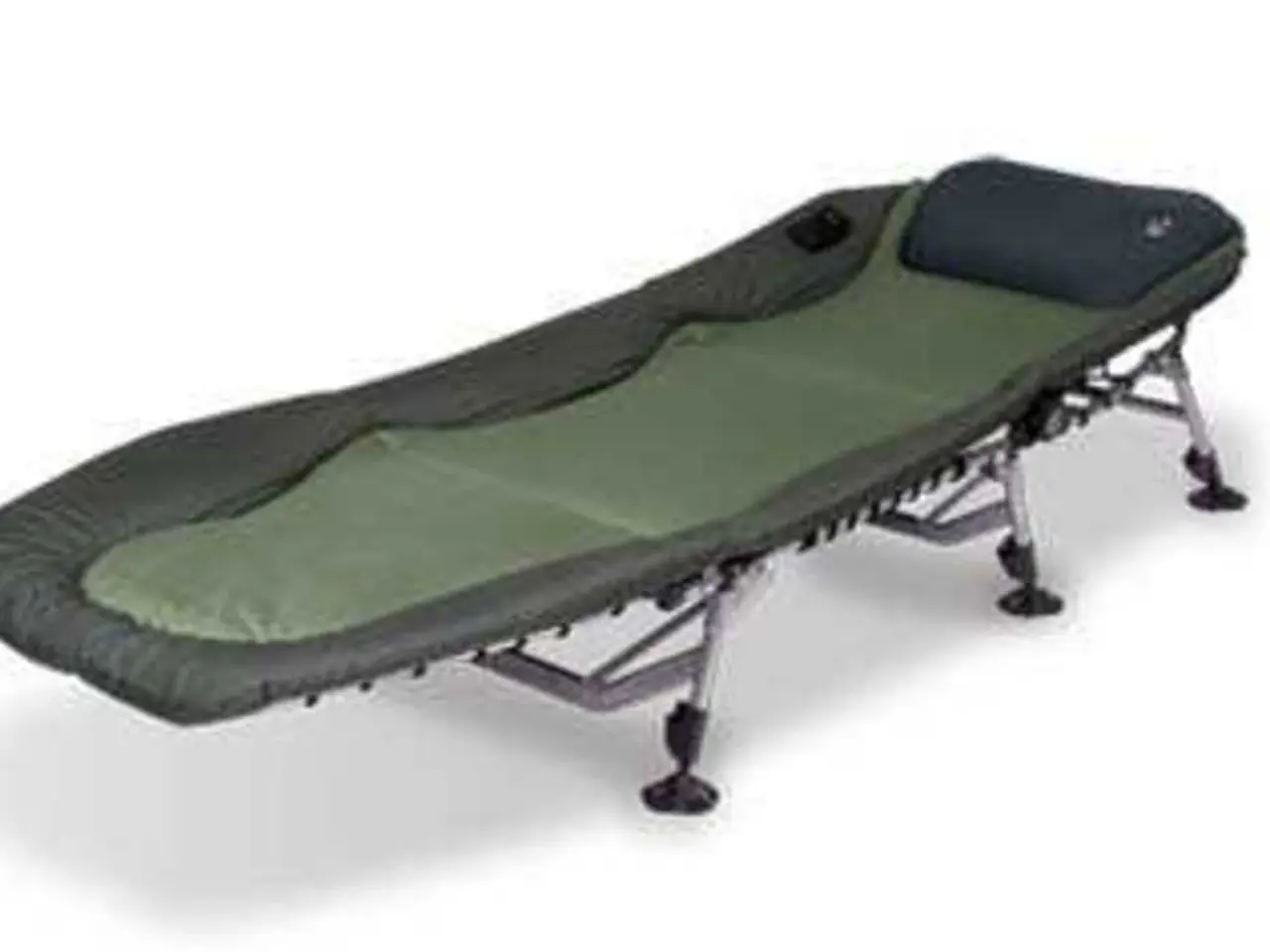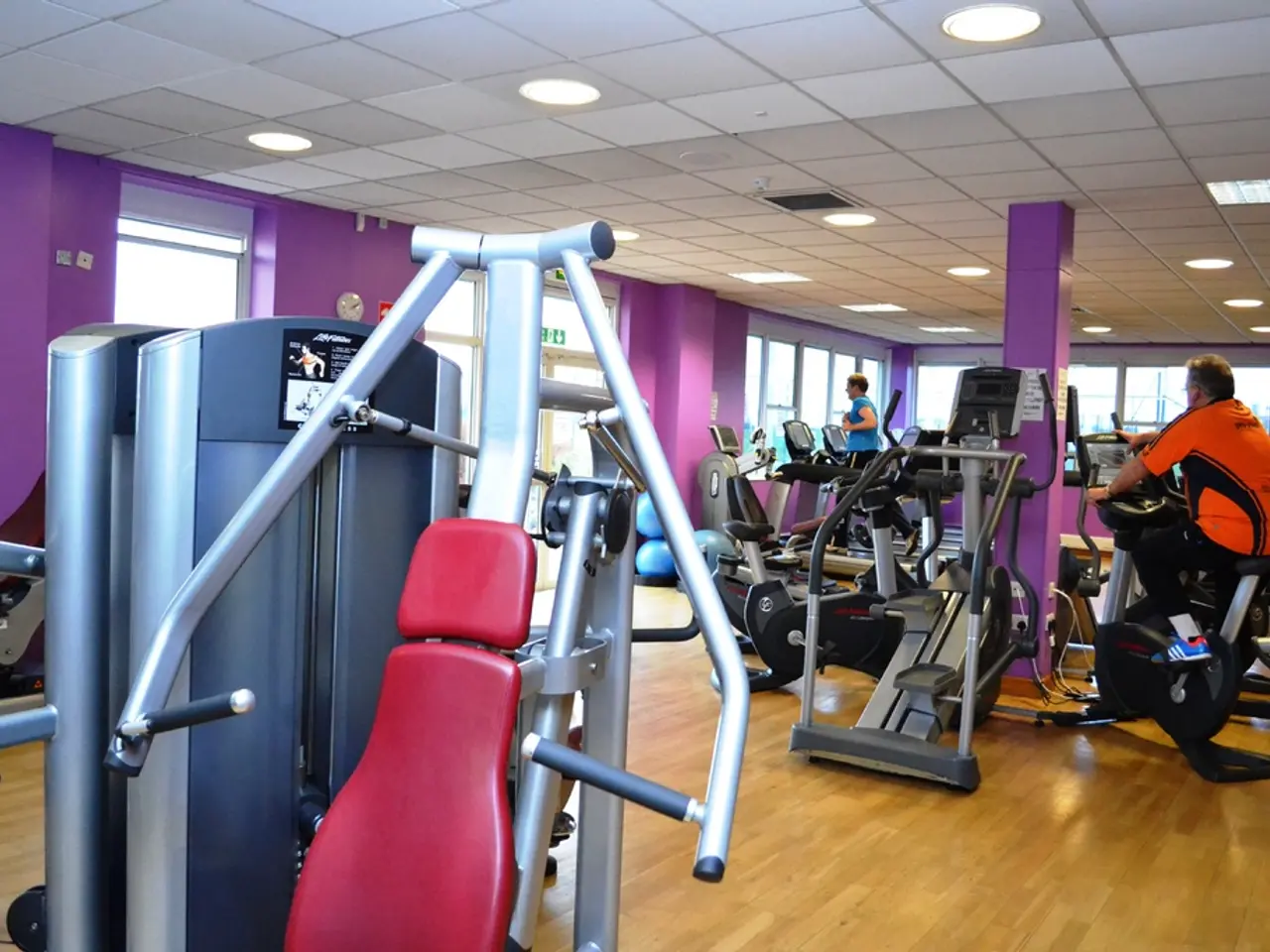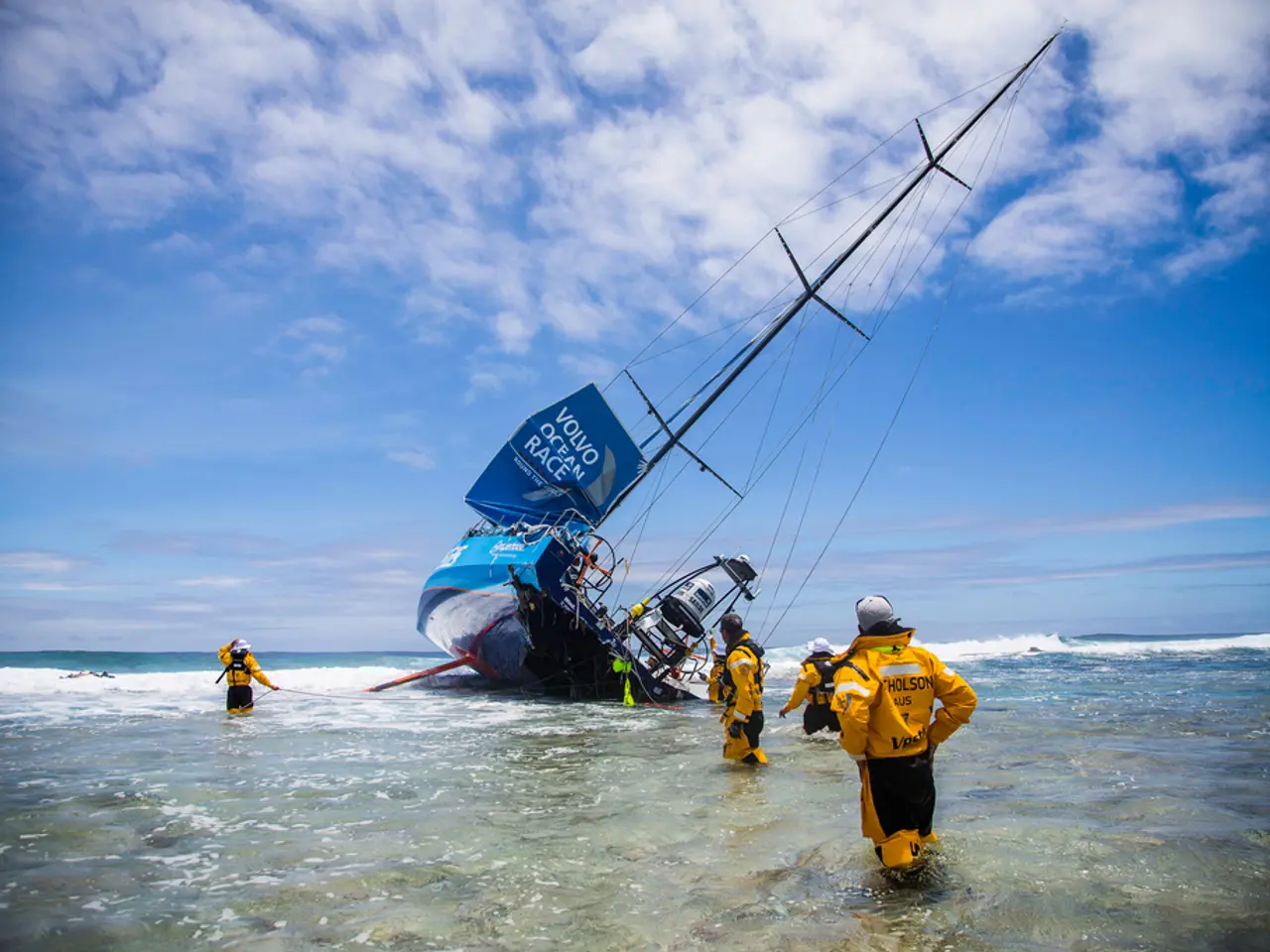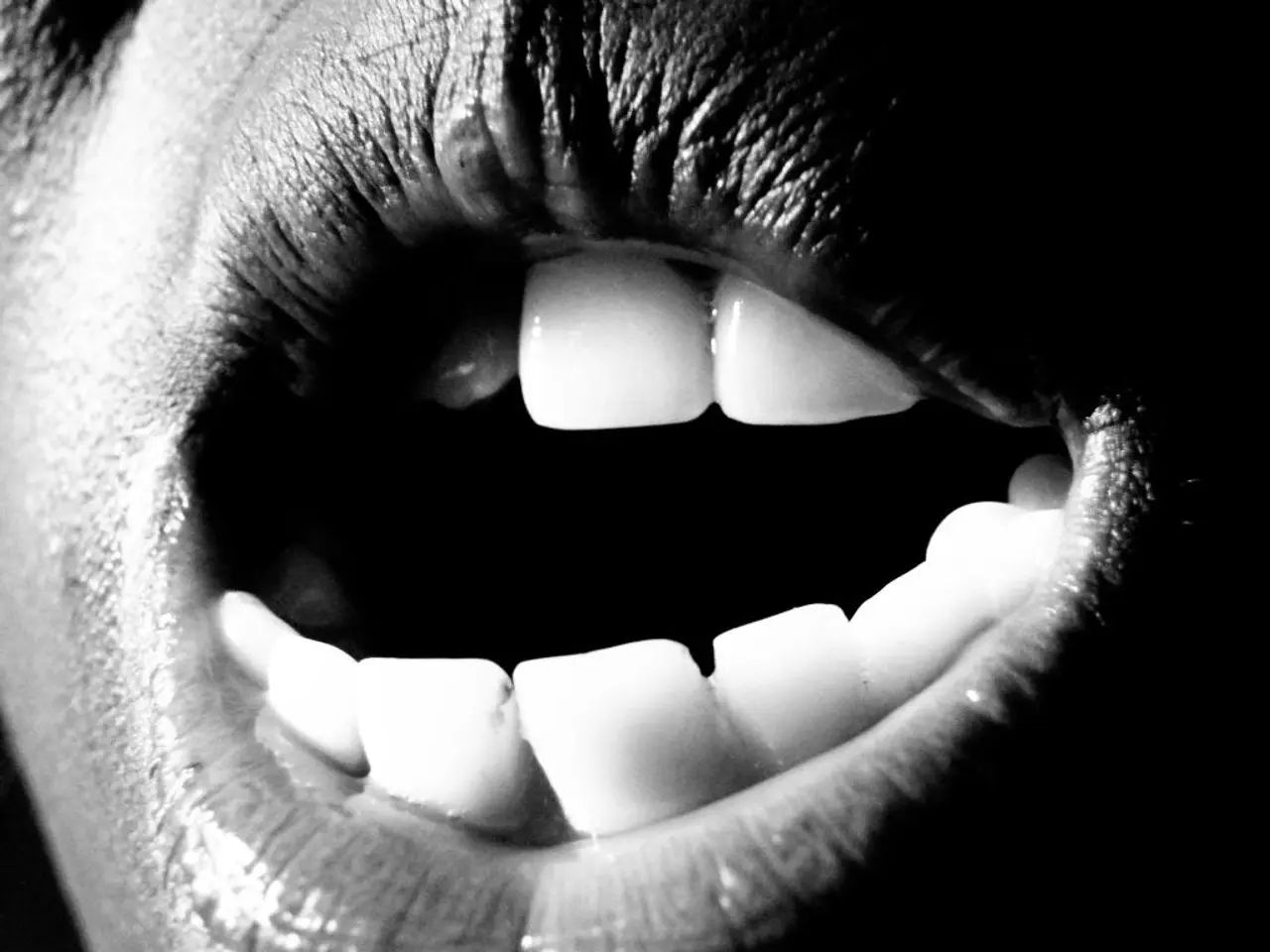Lower Back Strain Remedies: Symptoms, Diagnosis, and Healing Process
Pulled muscles in the lower back can be a common and painful affliction, often caused by overstretching, twisting, or lifting heavy objects. While rest and pain relief medication can help in the initial stages, gentle exercises and strengthening routines can aid in recovery and prevent further injury.
One such exercise is the Single-Leg Romanian Deadlift, which strengthens the entire posterior chain, including the glutes, hamstrings, and back extensors. To perform this exercise, stand with feet shoulder-width apart, knees slightly bent. Hold a light weight in one hand and, engaging your core and glutes, bend the knee of the standing leg slightly. Hinge at the hips to lower your torso toward the floor while lifting the opposite leg behind you, keeping your back flat. Return to standing by squeezing your glutes. Repeat 12 reps per side.
Pelvic Tilts, another effective exercise, strengthens the lower back and abdomen with minimal spinal pressure. To do this, lie on your back with knees bent, feet flat. Tighten abdominal muscles, pressing your lower back into the floor. Hold briefly, then release.
The Cobra Pose helps stretch and strengthen the lower back musculature. To perform this pose, lie face down with hands under shoulders and slowly lift your upper body, keeping hips on the floor. Hold for a few seconds and lower back down.
The Bird-Dog Exercise improves core stability and back muscle engagement. On hands and knees, extend one arm and the opposite leg while keeping your core tight and back stable. Hold briefly, then switch sides.
Hamstring stretches are also beneficial, as tight hamstrings can worsen lower back pain. Stretch gently by sitting on the floor with one leg extended and reaching toward toes without rounding your back. Hold for 20-30 seconds, and alternate sides.
The Cat-Cow Stretch promotes flexibility and mobility in the spine. To perform this stretch, kneel on hands and knees and alternate between arching your back downward (cow) and rounding it upward (cat). Perform slowly and smoothly.
However, it is crucial to avoid exercises that place excessive strain on the lower back, such as toe touches, sit-ups, crunches, leg lifts while lying flat, squats, deadlifts, and high-impact activities like running or jumping. Instead, focus on gentle stretching and exercises that support the spine and reduce pain.
Always warm-up before and cool down after exercises to prepare muscles and prevent further injury. Engage the core and glute muscles properly during exercises to support the spine and enhance stability. Monitor pain levels carefully, and if an exercise causes sharp or increased pain, stop immediately and consult a healthcare professional.
Practice exercises under supervision initially and consult a doctor before starting, especially if pain is severe or persistent. Maintain good posture during exercises and daily activity to reduce unnecessary strain on the lower back.
Most lower back strains and sprains should recover in 2 weeks, and more than 90% of people recover fully in 1 month. If the lower back pain is on the right side, it may be due to appendicitis, and a person should seek emergency medical help.
In some circumstances, a person may need to go to the emergency department or call 911 if they hear a crack when they sustain the injury, the injured part of the back is numb, discolored, or cold to the touch, a fever accompanies the pain, a person has lost control over the bladder or bowels, urinating is painful or produces bloody urine, there is severe pain in the abdomen, or if the pain does not ease after 1-2 weeks.
Aspirin or ibuprofen can be taken to reduce swelling and pain, but only as instructed by a doctor. A lower back strain occurs when a muscle or tendon tears and can be very painful. Another cause of lower back pain is a sprain, which occurs when a person overstretches or tears a ligament.
By focusing on exercises that gently strengthen the core and supporting muscles without stressing the spine, and by observing these precautions, recovery from a pulled lower back muscle can be supported effectively and safely.
- Arthritis, a common medical condition, may exacerbate lower back pain, making recovery more challenging.
- Bipolar disorder can affect a person's ability to adhere to a rehabilitation exercise routine, potentially prolonging recovery from pulled lower back muscles.
- In addition to muscle pain, a pulled lower back muscle may cause psoriatic arthritis flare-ups in some individuals with the condition.
- If anticoagulant therapy (AQ) is being used to treat another medical condition, caution should be exercised when performing some exercises that might increase the risk of injury or bleeding.
- Multiple sclerosis can affect the nervous system, potentially altering sensation and coordination, which may require modifications in exercise routines for people recovering from pulled back muscles.
- Atopic dermatitis, a form of eczema, can be aggravated by excessive sweating during fitness and exercise, which might increase discomfort during rehabilitation exercises for a pulled lower back muscle.
- COPD, chronic obstructive pulmonary disease, can make it more difficult for individuals to perform some exercises related to lower back pain due to shortness of breath.
- Predictive therapies and treatments for multiple sclerosis and NSCLC (non-small cell lung cancer) may need to be adjusted or temporarily paused to accommodate recovery from a pulled lower back muscle.
- Yoga poses such as Cat-Cow, Cobra, and Pelvic Tilts can help alleviate lower back pain and promote flexibility when performed gently and under the guidance of a qualified instructor.
- Sprains and strains in the lower back can worsen pre-existing health conditions like depression, making recuperation even more critical for both physical and mental well-being.
- Besides strengthening exercises, physical therapy, and chiropractic treatments are beneficial for managing and alleviating lower back pain due to sprains and strains.




